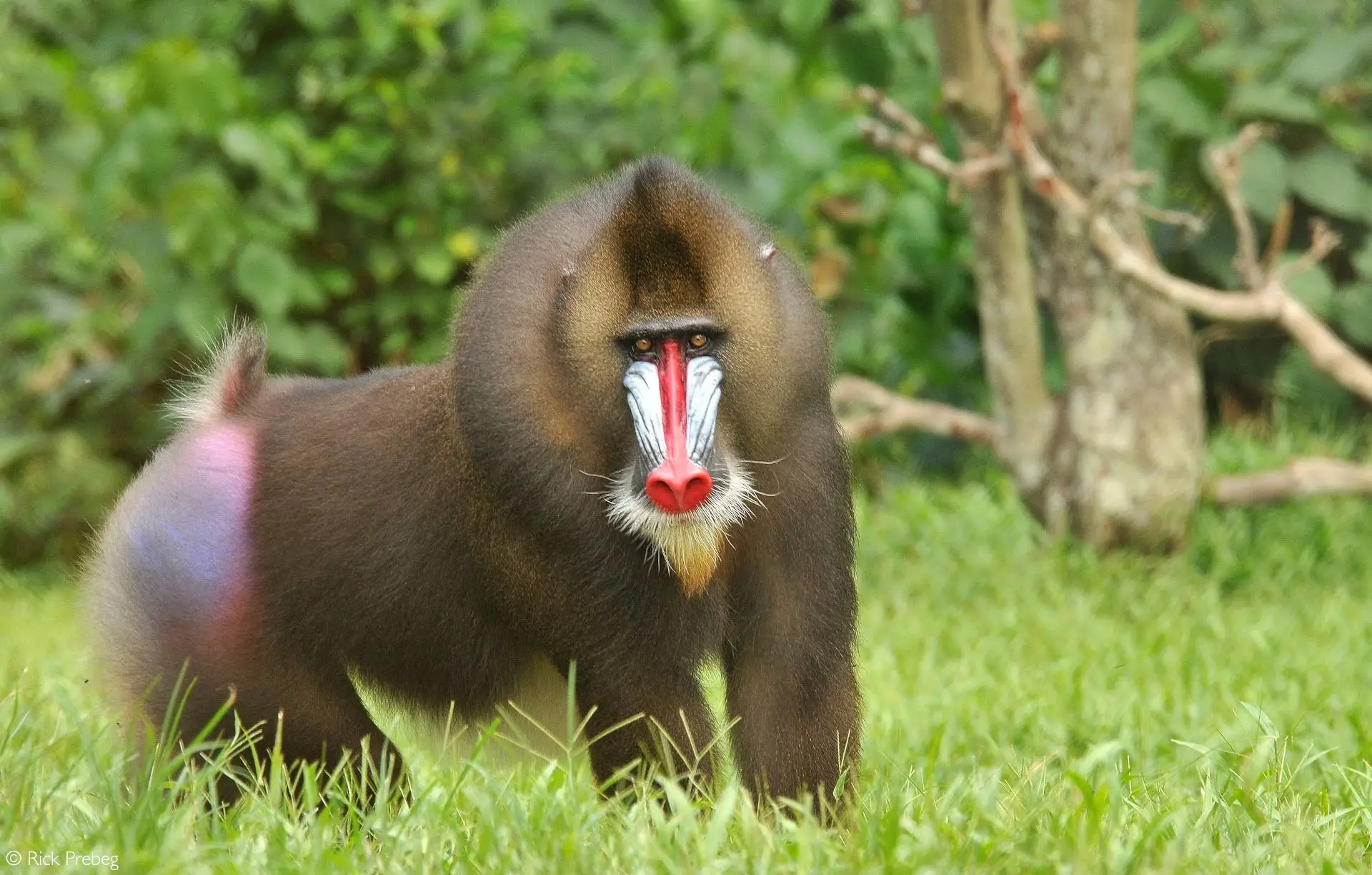Mandrill numbers are decreasing across their range, yet few people know what a mandrill is.
René de Klerk finds out more about this colourful species that calls the rainforests of central West Africa home.
The Facts
Vulnerable: The conservation status of the mandrill according to the International Union for Conservation of Nature Red List of Threatened Species. Its numbers are decreasing.
Threats: The mandrill’s biggest threat is humans as it is killed for the bushmeat trade. It is also threatened by habitat destruction.
Mangabey: The closest relative to the mandrill. Once classified as a baboon, the mandrill now forms part of the genus Mandrillus.
Omnivores: A mandrill feeds on a wide range of food and has been seen eating seeds, fruit, insects, leaves and mushrooms.
Numbers: Unknown. The mandrill ranges in hordes of several hundred individuals, but groups in areas with hunting pressure are smaller. Gabon has the biggest mandrill populations.
This charming species with its beautiful bright colours has captured many people’s attention. Charles Darwin once said that no other member in the class of mammals is coloured in such an extraordinary manner as the adult male mandrill. But despite the fascination with these colourful primates, not enough is known about them, nor where they hide deep in the rainforests of Cameroon, Congo, Equatorial Guinea and Gabon.

It is for this very reason that Professor Jo Setchell from the Department of Anthropology at the United Kingdom’s Durham University has been studying the behaviour, ecology and evolution of mandrills for the last 24 years.
“I got interested in them for two reasons,” Setchell says. ”Firstly, we knew almost nothing about them when I started and, secondly, because they look so extraordinary.” She says any research is important as it creates awareness, something that is needed for the conservation of the species. With growing industry and shrinking forests, their natural ranges are slowly shrinking.
Setchell has since studied many aspects of mandrill behaviour. “The most interesting finding to date is probably that females choose males for their genotype, despite the very strong reproductive skew,” she says. Females mate with dominant males and choose those with the brightest-red facial features.
But this is not all. Females also reproduce with males with good and complementary genes. Mandrills have a sternal gland, which males rub against trees, and females may select mates by comparing their own odour to that of males.
“When we compared genotypes with odour profiles, we found that genetic similarity correlates with odour similarity, providing a mechanism by which mandrills may detect a compatible mate,” Setchell explains.
In males, the most dominant male will be much redder than any other, and will have plenty of offspring with the females. According to Setchell, dominant males that lose their rank have much less testosterone and colour. While these males are no longer dominant, they will still be more colourful than males that have never been dominant, but less colourful than the dominant male. Males also use the brightness of the red to assess the fighting ability of other male mandrills.
Setchell’s latest project has seen her join forces with dental specialist Dr Wendy Dirks. “We are using the teeth of mandrills with known life histories that have died naturally, to compare the growth lines in their teeth with important life history events,” says Setchell. Through their work, they are hoping to see whether weaning, sexual maturation and giving birth are recorded in their teeth.
If there is a correlation, they will be able to apply it to fossilised teeth of extinct hominin species to provide a better understanding of human-life history evolution. The work is still in its early stages, making it too soon to provide any conclusive information.

